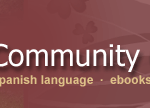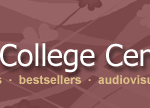| |
Today's Community College Library
by Paul E. Dumont Director, Educational Resources Support Services, Dallas County Community College District
Community college libraries are indispensable to the missions of their institutions, which provide a full array of educational programs to a continually expanding student population. With a total enrollment of over 10.4 million students, our 1,171 community colleges serve 44% of all undergraduates in the United States. Library, Learning Resource Center, or Instructional Resource Center are the terms used to describe a set of programs, services and physical space devoted to providing access by users to an organized universe of knowledge and information.
Community college libraries serve as physical space where students seek solitude for study and reflection and where they carry out research and meet with peers and teachers. Well over half of community college students, at an average age of 29, are employed at least part- time, and many also have family responsibilities; they must budget their time as well as their money. With more than 95% of community colleges providing internet access, their resources and services are accessible from anywhere and can serve the needs of students on and off-campus.
This makes the availability of electronic resources increasingly important. To contend with limited budgets, community college libraries use consortial arrangements, partnerships with other institutions, and resource sharing. Many community college libraries are fortunate to be part of an organization within their states that provide digital and electronic documents: online indexes, full-text databases, websites, e-books and e-journals. These are a necessary supplement, but do not replace the resources available in print. Books, newspapers and journals continue to be the mainstay of today's library.
Librarians are also indispensable to the teaching mission of the community college, as they partner with teaching faculty to provide the information literacy skills students need to access the ever growing and complex myriad resources available. Throughout the country, community college librarians have increased the number of information literacy/bibliographic instruction classes available to students to develop these critical skills.
As academic librarians, our overarching goal is to provide service to our students and faculties. To assure this goal, we must work collectively on an almost daunting number of critical issues including:
- Education, recruitment and retention of librarians
- The role of the library in academic institutions
- Impact of informational technology and digital resources on library services
- Scholarly communications and publishing
- Marketing of and funding for our libraries
These are but a few of the many challenges that have been identified as critical to our field. Professional association such as the American Library Association (ALA) and its biggest section, the Association of College and Research Libraries (ACRL), continue to provide avenues for librarians to lead our profession in these challenges. Together with the National Council for Learning Resources (NCLR), a Council of the American Association of Community Colleges (AACC) and a partner with the Community Junior College Library Section ( CJCLS) of ACRL, these organizations provide great service to all community college librarians. Readers may review the newly released American Association of Community Colleges (AACC) Position Statement on Library and Learning Resource Center Programs , a milestone for community college libraries, click here.
I urge all community college librarians to join ACRL and other professional organizations to become proactive in meeting the many challenges our libraries face. Our profession needs a steady stream of new ideas and initiatives and it needs the time and energy of our community college librarians. There are many opportunities for input and involvement. Groups exist to make recommendations on recruitment and to create marketing plans through an “@ your academic library” initiative. There is also a scholarly communications committee as well as a focus group on the future of libraries and our profession.
We must work together to shape our future. Web sites such as this will provide new opportunities for information sharing and will provide an avenue for librarians and vendors to better serve our patrons.
|
|




 For descriptions of these products
For descriptions of these products